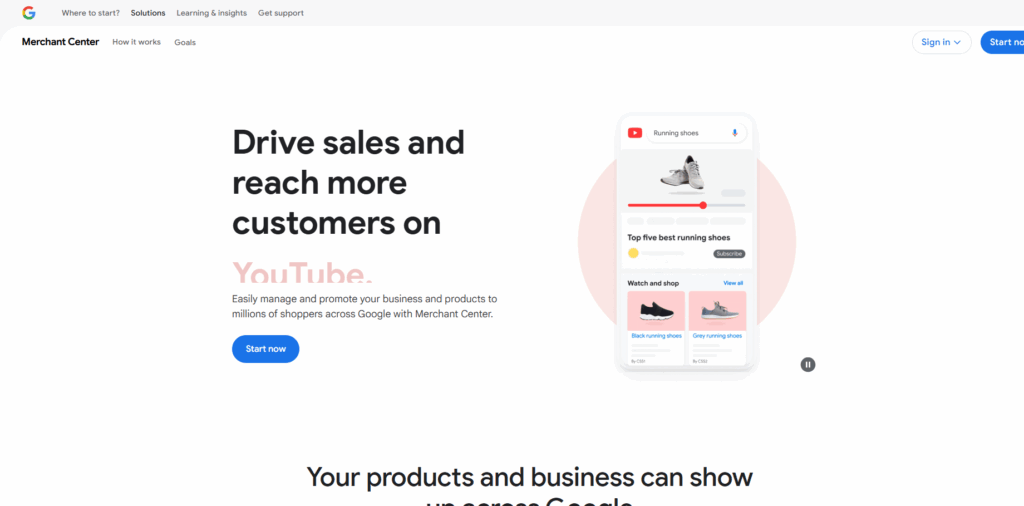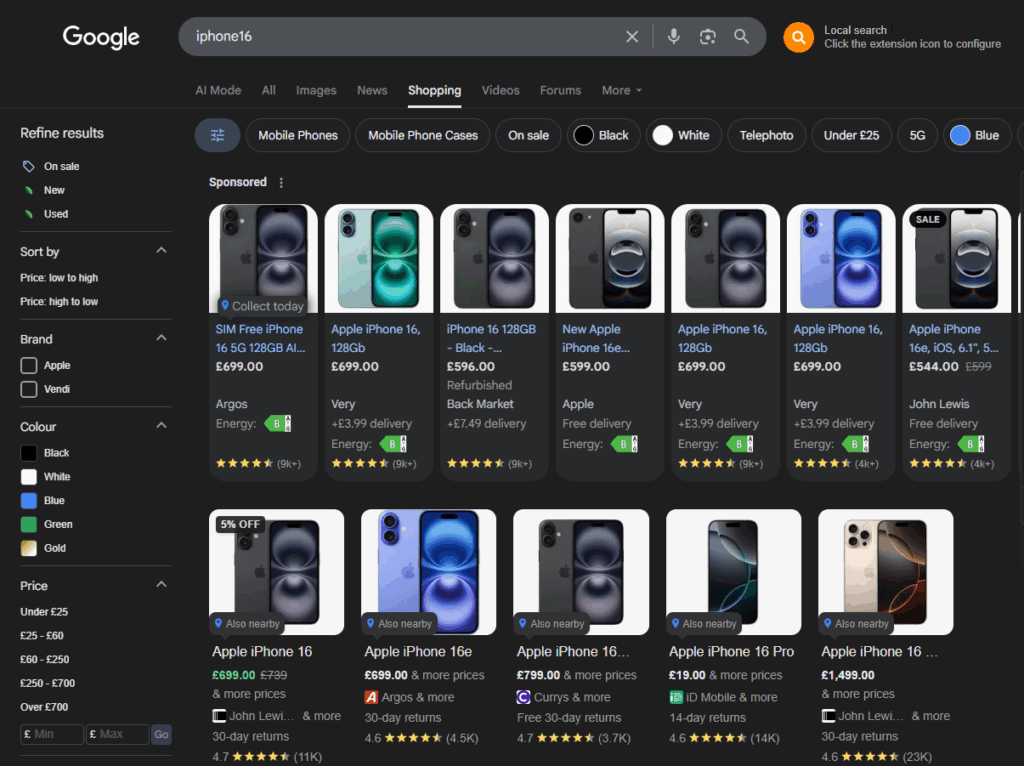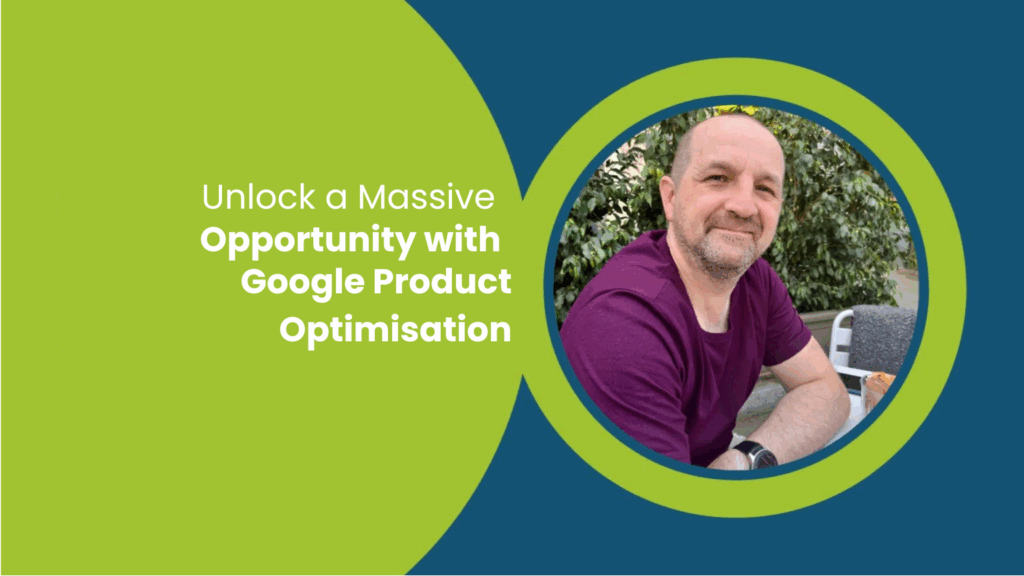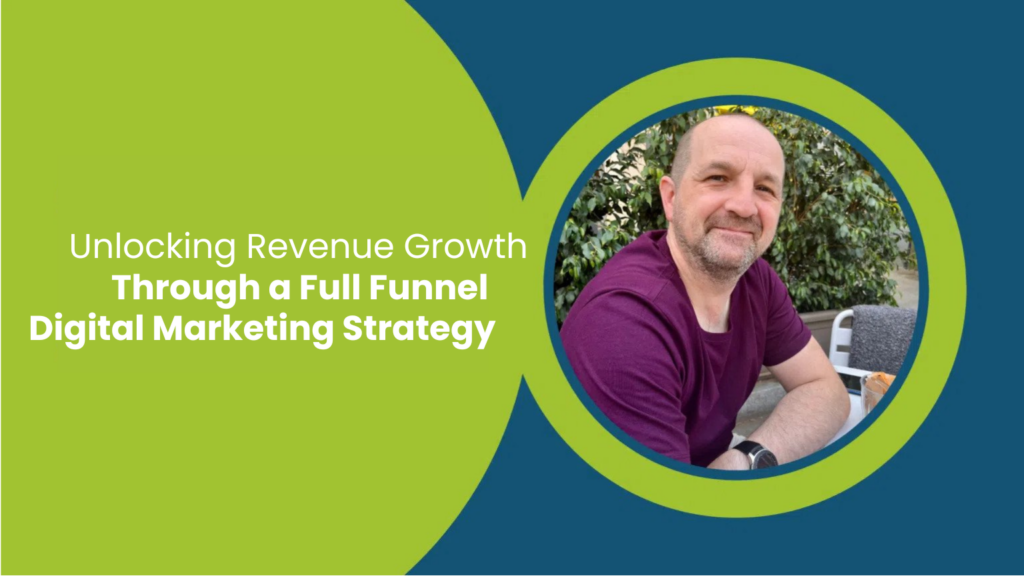
Many e-commerce businesses focus heavily on paid ads, but there is a powerful organic opportunity that often gets overlooked. Google product optimisation through organic product listings offers a chance to gain free, high-quality traffic. These listings appear as a carousel of products on Google’s search results, often alongside paid ads. According to industry insights, this carousel gives roughly ten times the opportunity to get organic traffic from Google’s first page, expanding reach from a handful of standard organic results to over 100 potential spots.
Understanding Google Merchant Centre and Google Products Optimisation
Google Merchant Centre is a free platform that allows retailers to upload their product data so that Google can show it in relevant search results. Unlike standard SEO where Google crawls website pages, organic product listings require a direct connection between product data and Google through this platform. When set up correctly, it increases the chances of appearing in Google Shopping carousels and free product listings, providing a wider reach without advertising costs.
Setting Up Your Google Merchant Centre Account

Setting up Google Merchant Centre is the critical first step to unlocking this organic traffic source. Start by creating a free account and linking your e-commerce platform. Whether using Shopify, WooCommerce, or Magento, the product feed acts as a bridge, sharing key product details with Google through an XML file. It is important to verify and claim your website within the Merchant Centre to confirm ownership. This setup ensures that your products are eligible to show in free listings on Google Shopping.
Optimising Product Attributes for Better Visibility
Once the account is set up, attention turns to optimising product attributes. Providing complete and accurate details helps Google understand and rank your products better. A Global Trade Identifier Number (GTIN), also known as a European Article Number (EAN), is essential. Without it, listings may be disapproved or underperform. Including brand names, product colour, size, gender suitability, dimensions, and pricing details also increases relevance. Sale prices can be included separately to catch buyers’ attention during promotions.
Crafting Effective Titles and Descriptions to Win Clicks
Product titles and descriptions play a big role in capturing user interest. It is not enough to use generic names like “washing machine.” Instead, titles should reflect how people search, such as “13kg drum eco-friendly washing machine.” Putting the most important details at the beginning of the title improves visibility and click-through rates.
Descriptions should be concise and relevant, focusing on what a customer would want to know without extra fluff or HTML formatting that could confuse Google. Google Merchant Centre allows product descriptions up to around 2048 characters, but longer does not mean better, keep it clear and focused. Removing HTML tags from descriptions using tools like ChatGPT ensures clean, readable text that Google can easily process.
How to Get Your Products Seen with Google Shopping Optimisation

Visibility on Google Shopping relies on optimising both the feed and product listings. Free Google product listings are available and can drive significant traffic when used well. Optimise for Google Shopping by researching relevant keywords and competitor listings. Competitor analysis is key, search your product category on Google to see how others structure titles and descriptions and find opportunities to stand out. Ensuring stock and pricing information stays accurate avoids disapprovals due to mismatches between the website and feed data. Continuous monitoring helps maintain performance and increases chances of showing in the highly competitive Google Shopping space.
The Role of Google Product Feed Optimisation in Google Merchant Centre
Google shopping feed optimisation is a crucial part of product and sales optimisation. It involves regularly updating product data to reflect changes in inventory, pricing, and attributes. A well-optimised feed improves product ranking in organic listings and supports better performance in paid campaigns. Tools like Google Search Console, Google Keyword Planner, Semrush, and Ahrefs help identify opportunities to refine the feed for maximum impact. Common pitfalls, such as hidden HTML errors or outdated stock information in your feed, can cause listing disapprovals and lost visibility.
Does Google Shopping Help SEO
Many wonder if Google Shopping helps with overall SEO. While Google Shopping listings do not directly affect traditional web page rankings, optimising product listings increases brand visibility and drives more traffic. Higher engagement and sales through Google Shopping can positively influence other SEO signals, such as user behaviour and site authority. Therefore, Google Shopping supports SEO indirectly by expanding reach and bringing in relevant visitors.
Monitoring and Adapting Your Product Optimisation Strategy
Optimisation is an ongoing process. Regular analysis of search queries, competitor strategies, and product performance is essential. Using data from Google Search Console and tools like Semrush or Ahrefs reveals which keywords drive traffic and which need improvement. Staying in sync with website stock and pricing ensures listings remain active. Adapting the strategy based on insights maintains and grows organic product visibility over time. To start without overhauling everything, focus on a single brand or product category and measure the impact of optimisation efforts.
The Long-Term Benefits of Investing in Product Optimisation

Although paid ads provide quick results, product optimisation builds a sustainable asset. Google shopping organic results bring free clicks that turn into revenue without ongoing advertising costs. Features like price comparison panels give a chance to win customers even if they initially click competitors’ listings. This creates a valuable opportunity to steal sales and build long-term value and profitability for e-commerce businesses.
Frequently Asked Questions
What is Google Shopping product listing optimisation?
Product listing optimisation means improving your product details and presentation so they appear more often and rank higher in Google Shopping and other search results.
What is product feed optimisation?
Product feed optimisation involves managing and updating your product data feed to ensure accuracy and completeness for Google Merchant Centre.
How do I promote free Google product listings?
Promote products by setting up Google Merchant Centre, optimising product feeds and listings, and using both paid ads and free organic product listings.
How to get seen on Google Shopping?
Get seen by using Google Merchant Centre, optimising product titles and descriptions, ensuring accurate stock and pricing, and analysing keyword data.
What is an example of product optimisation?
An example is changing a product title from “Washing Machine” to “13kg Drum Eco-Friendly Washing Machine” to match user search intent.
How do you optimise product listings on each platform to improve visibility and sales?
Each platform has different requirements, but common optimisations include accurate product attributes, keyword-rich titles, and clear descriptions tailored to user searches.
How can you optimise a product feed for better performance in Google Shopping?
Optimise your feed by regularly updating product information, including all required attributes, and monitoring performance data to adjust your strategy.
Conclusion
Optimising Google Merchant Centre product listings unlocks a huge opportunity for free traffic and long-term growth. By improving product data, refining attributes, and keeping listings fresh and accurate, you can achieve higher visibility and a stronger presence in Google Shopping. Even small improvements to titles, descriptions, or feed accuracy can lead to measurable gains in clicks and conversions.
If you are unsure where to start, try focusing on one product category or brand first. This targeted approach allows you to measure the direct impact of your optimisation efforts before rolling out changes across your entire inventory. Over time, these improvements create a competitive advantage that is difficult for rivals to replicate.




